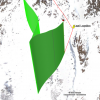- Joined
- May 5, 2019
- Messages
- 15
- Reactions
- 27
I've logged over 500 flights and this Mavic I've owned for 1 year and 2 months.
I live in Alaska and shoot photography up in the mountains. I've never had this issue before. I've pushed the drone in distance where the controller says "weak signal, adjust antenna." However, I've never lost connection to the drone and never video. I was flying atop a mountain perfect signal no warnings.
I receive "weak signal" warning for 1 second then a quick "do you want to return to home." Then literally 2 seconds after the controller went from weak signal it went to "trying to connect." I had 2 seconds to click the return to home button before it just completely lost signal to the drone? I was still thinking to myself why is it asking me this?
I was flying where I could not see the drone anymore. There was a lot snow at the time and we skied down to where we thought it might be, but It literally could be anywhere. We checked the coordinates of last scene but we couldn't make it there due to snow. Especially if it dropped after the battery died who knows where it fell with the mountain slope of a 45 degree angle.
I'm not one of those guys asking for a new drone. I just called DJI after the accident to see if they could tell me what happened. If it's my fault I want to to know. However, in my experience this was a complete glitch in the device. I had absolute lost control of the device, it went from 100% connection, I was actually taking photos and the drone was hovering where it went from that to 2 seconds later trying to connect to device. When you can't see the drone and have no connection you can't fly it back! I was 2000 feet away from home with 19 satellites.
I became a member here because I wanted to see if you guys had any advice? DJI was terrible. This guy looked me up and said you're 2 MONTHS passed your warranty so we can't help AT ALL. Not even look at the flight records?
I'm bummed for that customer experience. This is not a toy to me, I was also using this for research for my MBA at the University of Anchorage. DJI offered nothing, no discount on a new drone and would not look at flight records. Again, not looking for a handout however if this is truly a DJI fault would they ever tell you? I mean they could literally drop these things out of the sky after your warranty is up with a firmware upgrade and would we ever know???
Let me know your thought...
Attached Flight Log
I live in Alaska and shoot photography up in the mountains. I've never had this issue before. I've pushed the drone in distance where the controller says "weak signal, adjust antenna." However, I've never lost connection to the drone and never video. I was flying atop a mountain perfect signal no warnings.
I receive "weak signal" warning for 1 second then a quick "do you want to return to home." Then literally 2 seconds after the controller went from weak signal it went to "trying to connect." I had 2 seconds to click the return to home button before it just completely lost signal to the drone? I was still thinking to myself why is it asking me this?
I was flying where I could not see the drone anymore. There was a lot snow at the time and we skied down to where we thought it might be, but It literally could be anywhere. We checked the coordinates of last scene but we couldn't make it there due to snow. Especially if it dropped after the battery died who knows where it fell with the mountain slope of a 45 degree angle.
I'm not one of those guys asking for a new drone. I just called DJI after the accident to see if they could tell me what happened. If it's my fault I want to to know. However, in my experience this was a complete glitch in the device. I had absolute lost control of the device, it went from 100% connection, I was actually taking photos and the drone was hovering where it went from that to 2 seconds later trying to connect to device. When you can't see the drone and have no connection you can't fly it back! I was 2000 feet away from home with 19 satellites.
I became a member here because I wanted to see if you guys had any advice? DJI was terrible. This guy looked me up and said you're 2 MONTHS passed your warranty so we can't help AT ALL. Not even look at the flight records?
I'm bummed for that customer experience. This is not a toy to me, I was also using this for research for my MBA at the University of Anchorage. DJI offered nothing, no discount on a new drone and would not look at flight records. Again, not looking for a handout however if this is truly a DJI fault would they ever tell you? I mean they could literally drop these things out of the sky after your warranty is up with a firmware upgrade and would we ever know???
Let me know your thought...
Attached Flight Log



















